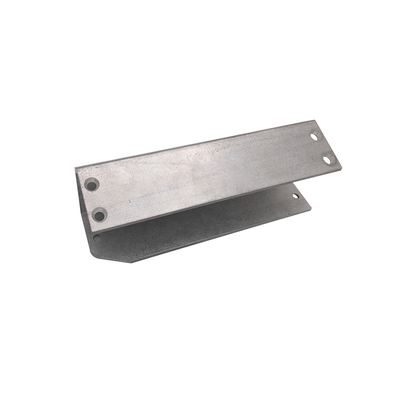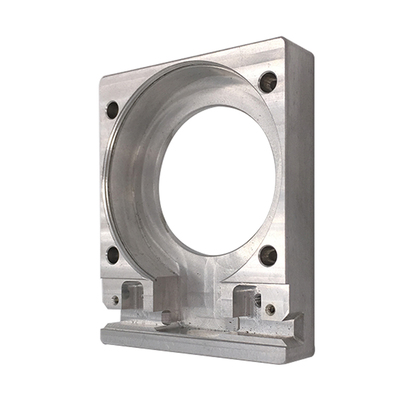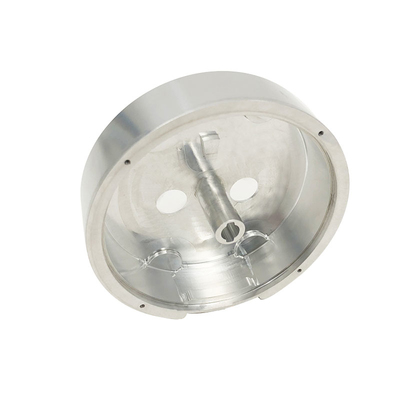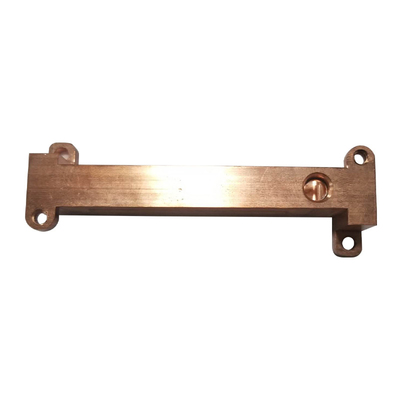Using Projection Method to Check and Correct Interference in CNC Machining
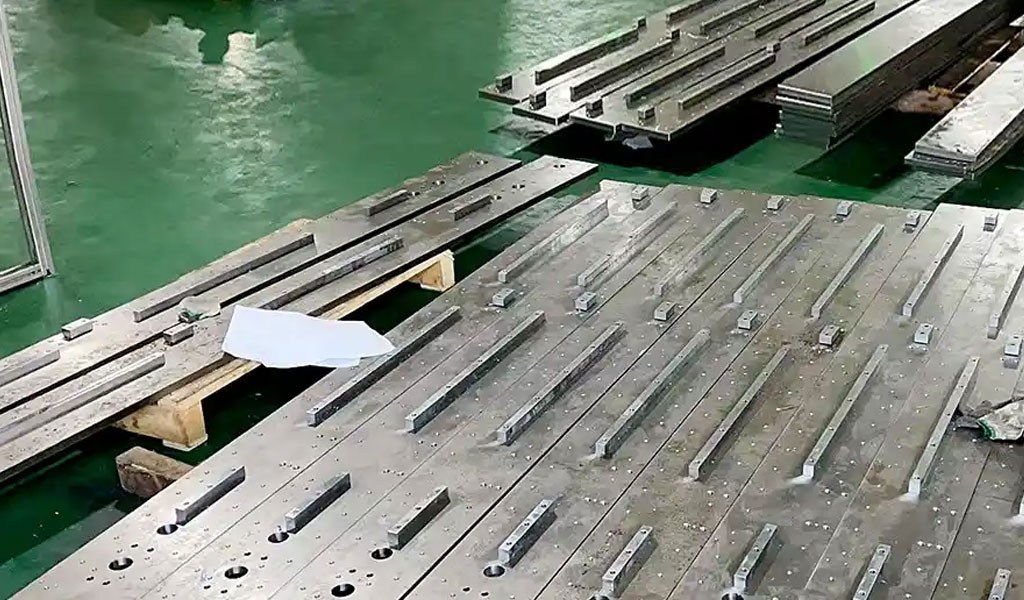
Computer Numerical Control (CNC) machining is a cornerstone of modern manufacturing, enabling the production of complex parts with high precision and repeatability. CNC machines operate by following programmed instructions to control tools and machinery, shaping raw materials into finished components. However, a critical challenge in CNC machining is the potential for interference—unintended collisions between the tool, workpiece, fixture, or machine components. Such interferences can lead to tool damage, workpiece defects, machine downtime, and safety hazards. To mitigate these risks, various methods have been developed to detect and correct interference during the machining process. Among these, the projection method has emerged as a robust and computationally efficient approach for interference checking and correction in CNC machining.
The projection method involves projecting the geometries of the tool, workpiece, and other components onto a plane or a series of planes to analyze their spatial relationships. By simplifying three-dimensional (3D) interactions into two-dimensional (2D) or lower-dimensional representations, the projection method reduces computational complexity while maintaining accuracy in detecting potential collisions. This article provides a comprehensive exploration of the projection method in CNC machining, covering its theoretical foundations, practical implementation, advantages, limitations, and applications. The discussion includes detailed comparisons with other interference-checking methods, supported by tables to illustrate key differences and performance metrics.
Fundamentals of CNC Machining and Interference
CNC machining encompasses a range of processes, including milling, turning, drilling, and grinding, each controlled by precise numerical instructions. These instructions, typically written in G-code, dictate the tool's path, speed, and feed rate. The complexity of CNC operations, particularly in multi-axis machining, increases the risk of interference. Interference can occur in several forms:
-
Tool-Workpiece Interference: The tool collides with the workpiece in an unintended area, causing gouging or material removal errors.
-
Tool-Fixture Interference: The tool or toolholder contacts the fixture holding the workpiece, potentially damaging both.
-
Tool-Machine Interference: The tool or spindle collides with machine components, such as the bed or enclosure.
-
Workpiece-Fixture Interference: The workpiece moves or is positioned in a way that causes contact with the fixture.
These interferences arise due to errors in toolpath programming, inaccurate workpiece setup, or unforeseen dynamic behaviors during machining. Traditional interference-checking methods rely on manual inspection, simulation software, or geometric analysis, but these approaches can be time-consuming or limited in scope. The projection method offers a systematic and automated solution to address these challenges.
Theoretical Basis of the Projection Method
The projection method is grounded in geometric analysis and computational geometry. It simplifies the 3D interference-checking problem by projecting the relevant geometries onto a 2D plane or a series of planes. The key steps in the projection method are:
-
Geometric Representation: The tool, workpiece, fixture, and machine components are modeled as 3D geometric entities, typically using Computer-Aided Design (CAD) software. Common representations include boundary representation (B-Rep), constructive solid geometry (CSG), or mesh-based models.
-
Projection Plane Selection: A projection plane is chosen based on the machining setup and toolpath. For example, in 3-axis milling, the XY plane (perpendicular to the tool axis) is often used, while 5-axis machining may require multiple planes to account for tool orientation changes.
-
Projection Transformation: The 3D geometries are projected onto the selected plane, converting their spatial coordinates into 2D coordinates. This can involve orthographic or perspective projection, depending on the application.
-
Intersection Analysis: The projected 2D geometries are analyzed for overlaps or intersections, which indicate potential interferences in the 3D space.
-
Back-Projection and Correction: If an interference is detected, the 2D intersection data is mapped back to the 3D space to identify the exact location and nature of the collision. Corrective actions, such as toolpath modification or fixture repositioning, are then applied.
The projection method leverages mathematical techniques such as linear algebra, vector analysis, and computational geometry algorithms to perform these steps efficiently. For instance, the projection of a point ( P(x, y, z) ) onto the XY plane involves setting ( z = 0 ), resulting in the 2D point ( P'(x, y) ). For complex geometries, algorithms like the Separating Axis Theorem (SAT) or polygon clipping are used to detect intersections in the projected plane.
Implementation of the Projection Method in CNC Machining
Pre-Processing Phase
Before applying the projection method, the CNC machining setup must be fully defined. This includes:
-
CAD Modeling: Creating accurate 3D models of the tool, workpiece, fixture, and machine components. Software like SolidWorks, CATIA, or Fusion 360 is commonly used.
-
Toolpath Generation: Generating the toolpath using Computer-Aided Manufacturing (CAM) software, such as Mastercam or Siemens NX. The toolpath defines the sequence of tool movements and orientations.
-
Coordinate System Definition: Establishing a common coordinate system for all components, typically aligned with the machine's reference frame.
Projection Algorithm
The projection algorithm is the core of the interference-checking process. A typical algorithm includes the following steps:
-
Discretization: The toolpath is discretized into a series of points or segments, representing the tool's position at discrete time intervals.
-
Tool Geometry Projection: For each tool position, the tool's geometry (e.g., a cylindrical cutter or ball-end mill) is projected onto the chosen plane. The projection accounts for the tool's size, shape, and orientation.
-
Workpiece and Fixture Projection: The workpiece and fixture geometries are similarly projected. To reduce computational load, only the relevant portions of the workpiece (e.g., the area near the tool) are projected.
-
Intersection Detection: The projected geometries are analyzed for overlaps using 2D collision detection algorithms. Common techniques include bounding box tests, polygon intersection algorithms, or spatial partitioning (e.g., quadtrees).
-
Interference Reporting: If an intersection is detected, the algorithm records the tool position, intersection coordinates, and affected components. This information is used to generate a report or trigger corrective actions.
Post-Processing and Correction
Once interferences are identified, corrective measures are implemented. These may include:
-
Toolpath Modification: Adjusting the toolpath to avoid the interference, such as by increasing the tool's clearance height or altering its approach angle.
-
Fixture Redesign: Repositioning or redesigning the fixture to eliminate collisions.
-
Parameter Adjustment: Modifying machining parameters, such as feed rate or spindle speed, to reduce dynamic effects that contribute to interference.
Software Integration
The projection method is typically implemented within CAM software or as a standalone module. Commercial software like Vericut and PowerMill includes interference-checking features that incorporate projection-based algorithms. Open-source alternatives, such as PyCAM or FreeCAD, can also be customized to support the projection method.
Advantages of the Projection Method
The projection method offers several advantages over traditional interference-checking approaches:
-
Computational Efficiency: By reducing 3D problems to 2D, the projection method significantly lowers computational requirements, enabling real-time or near-real-time interference checking.
-
Scalability: The method can handle complex geometries and multi-axis machining setups by using multiple projection planes or adaptive projection strategies.
-
Accuracy: When properly implemented, the projection method provides high accuracy in detecting interferences, especially for static geometries.
-
Flexibility: The method can be applied to various CNC processes, including milling, turning, and additive manufacturing, with minimal modifications.
-
Integration: The projection method integrates seamlessly with existing CAD/CAM workflows, leveraging standard geometric models and toolpath data.
Limitations of the Projection Method
Despite its advantages, the projection method has certain limitations:
-
Projection Artifacts: Projecting 3D geometries onto a 2D plane can introduce artifacts, such as false positives (detecting non-existent interferences) or false negatives (missing actual interferences). This is particularly problematic for complex or highly curved surfaces.
-
Dynamic Effects: The projection method is primarily designed for static interference checking and may not account for dynamic effects, such as tool deflection, vibration, or thermal expansion.
-
Plane Selection: The accuracy of the method depends on the choice of projection plane. Inappropriate plane selection can lead to incomplete or inaccurate interference detection.
-
Computational Overhead for Complex Geometries: While the projection method is generally efficient, highly detailed or non-convex geometries may require significant computational resources for projection and intersection analysis.
-
Limited Applicability to Non-Geometric Interferences: The method focuses on geometric collisions and may not detect other issues, such as thermal overloads or material property changes.
Comparison with Other Interference-Checking Methods
To provide a comprehensive understanding of the projection method, it is useful to compare it with other interference-checking approaches commonly used in CNC machining. The following methods are widely employed:
-
Bounding Volume Hierarchy (BVH): This method uses hierarchical bounding volumes (e.g., spheres, boxes) to approximate the geometries of the tool, workpiece, and other components. Interferences are detected by checking for overlaps between bounding volumes.
-
Voxel-Based Methods: The machining environment is discretized into a grid of voxels (3D pixels), and interferences are detected by checking for voxel occupancy conflicts.
-
Distance Field Methods: These methods compute the minimum distance between the tool and other components, flagging an interference if the distance falls below a threshold.
-
Simulation-Based Methods: Full simulation of the machining process, including tool motion and material removal, is performed to identify interferences. This is often done using software like Vericut.
Comparative Analysis
The following table compares the projection method with these alternative approaches across several criteria:
|
Criterion |
Projection Method |
Bounding Volume Hierarchy |
Voxel-Based Methods |
Distance Field Methods |
Simulation-Based Methods |
|---|---|---|---|---|---|
|
Computational Efficiency |
High (2D projections reduce complexity) |
Moderate (depends on hierarchy depth) |
Low to Moderate (depends on voxel resolution) |
Moderate (distance calculations can be intensive) |
Low (full simulation is computationally intensive) |
|
Accuracy |
High for static geometries, moderate for complex surfaces |
Moderate (approximation introduces errors) |
High (with fine voxel grids), but resolution-dependent |
High (precise distance measurements) |
Very High (accounts for dynamic and geometric factors) |
|
Scalability |
High (handles multi-axis machining with multiple planes) |
High (scales well with complex geometries) |
Moderate (fine grids increase memory usage) |
Moderate (scales poorly with many components) |
Low (complex setups require significant resources) |
|
Ease of Implementation |
Moderate (requires geometric projection and intersection algorithms) |
Moderate (requires hierarchy construction) |
Moderate (requires voxel grid setup) |
Complex (requires distance field computation) |
Complex (requires full simulation environment) |
|
Dynamic Effects |
Limited (primarily static analysis) |
Limited (static or quasi-static analysis) |
Limited (voxel grids are static) |
Moderate (can incorporate some dynamic effects) |
High (can model tool deflection, vibration, etc.) |
|
Software Integration |
High (integrates with CAD/CAM workflows) |
High (widely supported in CAM software) |
Moderate (requires specialized voxel engines) |
Moderate (less common in commercial software) |
High (supported by simulation tools like Vericut) |
|
Applicability |
Broad (milling, turning, additive manufacturing) |
Broad (applicable to most CNC processes) |
Broad (but memory-intensive for large parts) |
Moderate (best for specific applications) |
Broad (but resource-intensive) |
|
Real-Time Capability |
High (suitable for real-time or near-real-time checking) |
Moderate (depends on hierarchy complexity) |
Low (fine grids slow down real-time processing) |
Moderate (distance calculations can be slow) |
Low (full simulation is not real-time) |
Discussion of Comparison
The projection method excels in computational efficiency and real-time capability, making it ideal for applications where rapid interference checking is required, such as in-process monitoring or adaptive machining. Its reliance on 2D projections simplifies the problem, but this comes at the cost of potential projection artifacts, particularly for complex geometries. In contrast, BVH and voxel-based methods offer robust handling of complex shapes but may require more computational resources. Distance field methods provide precise interference detection but are less common in commercial software due to their complexity. Simulation-based methods, while highly accurate and capable of modeling dynamic effects, are resource-intensive and typically used for offline verification rather than real-time applications.
Applications of the Projection Method in CNC Machining
The projection method has been successfully applied in various CNC machining scenarios, demonstrating its versatility and effectiveness. Key applications include:
3-Axis Milling
In 3-axis milling, the tool moves along the X, Y, and Z axes, and the workpiece is typically stationary. The projection method is particularly effective in this context, as the tool's motion is constrained to a single axis (Z) during cutting. By projecting the tool and workpiece onto the XY plane, interferences can be detected efficiently. For example, in pocket milling, the projection method ensures that the tool does not collide with the pocket walls or fixture.
5-Axis Machining
5-axis machining introduces additional complexity due to the tool's ability to rotate around two additional axes (A and B or equivalent). The projection method adapts to this by using multiple projection planes or dynamic plane selection based on the tool's orientation. This approach has been used in aerospace manufacturing to machine complex turbine blades, where tool-workpiece and tool-fixture interferences are common.
Turning Operations
In CNC turning, the workpiece rotates while the tool moves linearly. The projection method can be applied by projecting the tool and workpiece onto a plane perpendicular to the spindle axis. This is particularly useful for detecting interferences between the tool and the chuck or tailstock.
Additive Manufacturing
While primarily associated with subtractive manufacturing, the projection method is also applicable to hybrid manufacturing processes that combine CNC machining with additive techniques. For example, in directed energy deposition (DED), the projection method ensures that the deposition head does not collide with the partially built workpiece.
In-Process Monitoring
The projection method's computational efficiency makes it suitable for in-process interference monitoring. By integrating the method with real-time sensor data (e.g., tool position feedback), manufacturers can detect and correct interferences during machining, reducing scrap rates and downtime.
Case Studies
Case Study 1: Aerospace Component Manufacturing
A leading aerospace manufacturer implemented the projection method to check for interferences in the 5-axis milling of a titanium turbine blade. The complex geometry of the blade, combined with the need for tight tolerances, made interference detection critical. The projection method was integrated into the CAM software, using multiple projection planes to account for the tool's varying orientations. The system detected potential tool-fixture interferences in 12% of the toolpath segments, allowing engineers to modify the toolpath and avoid collisions. The implementation reduced machining errors by 15% and improved production efficiency.
Case Study 2: Automotive Mold Production
An automotive supplier used the projection method to verify toolpaths for a high-precision mold used in injection molding. The mold's intricate cavities required careful toolpath planning to avoid tool-workpiece interferences. By projecting the tool and mold onto the XY plane, the system identified gouging risks in several regions. Corrective actions, including toolpath smoothing and fixture repositioning, were applied, resulting in a 10% reduction in machining time and zero defective parts.
Advanced Techniques and Future Directions
Adaptive Projection Strategies
To address the limitations of static projection planes, researchers are exploring adaptive projection strategies that dynamically adjust the projection plane based on the tool's motion and workpiece geometry. For example, machine learning algorithms can predict optimal projection planes by analyzing historical machining data, improving accuracy and efficiency.
Integration with Machine Learning
Machine learning is being increasingly integrated with the projection method to enhance interference detection. Supervised learning models can be trained on labeled datasets of machining scenarios to predict interference risks, while unsupervised learning can identify patterns in toolpath data that indicate potential collisions. These approaches complement the geometric analysis of the projection method, enabling more robust interference checking.
Real-Time Correction with IoT
The Internet of Things (IoT) enables real-time data exchange between CNC machines, sensors, and software systems. By coupling the projection method with IoT, manufacturers can implement real-time interference correction. For instance, if an interference is detected, the system can automatically adjust the toolpath or pause the machine, minimizing damage and downtime.
Hybrid Methods
Hybrid interference-checking methods combine the projection method with other approaches, such as BVH or distance fields, to leverage their respective strengths. For example, a hybrid system might use the projection method for rapid initial screening and a distance field method for precise verification of detected interferences. Such systems are particularly promising for complex, high-value parts in industries like aerospace and medical device manufacturing.
Future Directions
The future of the projection method lies in its integration with emerging technologies, such as digital twins, augmented reality (AR), and advanced robotics. Digital twins—virtual replicas of physical machining systems—can use the projection method to simulate and optimize toolpaths before machining begins. AR can visualize projected geometries in real-time, aiding operators in setup and troubleshooting. Additionally, as CNC machines become more autonomous, the projection method will play a critical role in ensuring safe and efficient operation.
Conclusion
The projection method is a powerful and versatile tool for checking and correcting interference in CNC machining. By simplifying 3D geometric interactions into 2D projections, it offers a computationally efficient and accurate solution for detecting potential collisions between the tool, workpiece, fixture, and machine components. Its advantages include high scalability, ease of integration with CAD/CAM workflows, and applicability to a wide range of CNC processes. However, challenges such as projection artifacts and limited handling of dynamic effects must be addressed to fully realize its potential.
Through ongoing advancements in adaptive projection strategies, machine learning, and IoT integration, the projection method is poised to become even more effective in the future. Its role in ensuring precision, safety, and efficiency in CNC machining makes it an indispensable tool for modern manufacturing. As industries continue to demand higher precision and complexity in machined parts, the projection method will remain a cornerstone of interference management, driving innovation and productivity in the field.
Reprint Statement: If there are no special instructions, all articles on this site are original. Please indicate the source for reprinting:https://www.cncmachiningptj.com/,thanks!
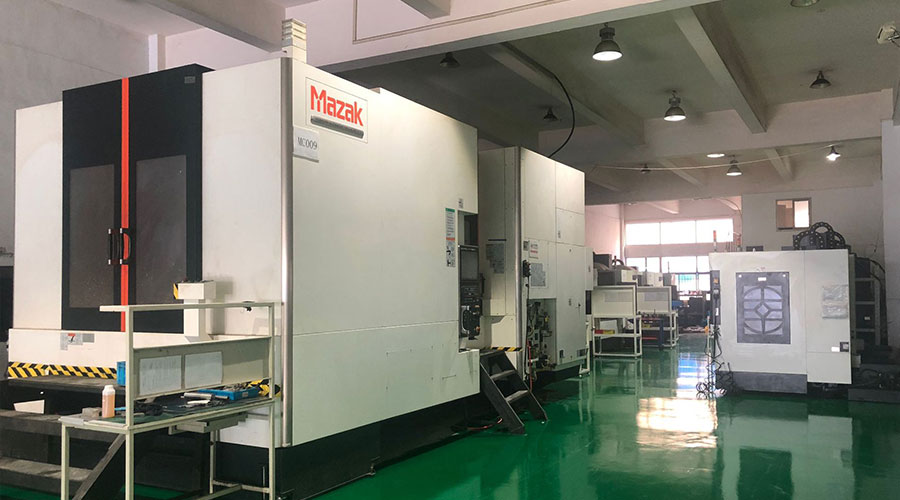 3, 4 and 5-axis precision CNC machining services for aluminum machining, beryllium, carbon steel, magnesium, titanium machining, Inconel, platinum, superalloy, acetal, polycarbonate, fiberglass, graphite and wood. Capable of machining parts up to 98 in. turning dia. and +/-0.001 in. straightness tolerance. Processes include milling, turning, drilling, boring, threading, tapping, forming, knurling, counterboring, countersinking, reaming and laser cutting. Secondary services such as assembly, centerless grinding, heat treating, plating and welding. Prototype and low to high volume production offered with maximum 50,000 units. Suitable for fluid power, pneumatics, hydraulics and valve applications. Serves the aerospace, aircraft, military, medical and defense industries.PTJ will strategize with you to provide the most cost-effective services to help you reach your target,Welcome to Contact us ( [email protected] ) directly for your new project.
3, 4 and 5-axis precision CNC machining services for aluminum machining, beryllium, carbon steel, magnesium, titanium machining, Inconel, platinum, superalloy, acetal, polycarbonate, fiberglass, graphite and wood. Capable of machining parts up to 98 in. turning dia. and +/-0.001 in. straightness tolerance. Processes include milling, turning, drilling, boring, threading, tapping, forming, knurling, counterboring, countersinking, reaming and laser cutting. Secondary services such as assembly, centerless grinding, heat treating, plating and welding. Prototype and low to high volume production offered with maximum 50,000 units. Suitable for fluid power, pneumatics, hydraulics and valve applications. Serves the aerospace, aircraft, military, medical and defense industries.PTJ will strategize with you to provide the most cost-effective services to help you reach your target,Welcome to Contact us ( [email protected] ) directly for your new project.
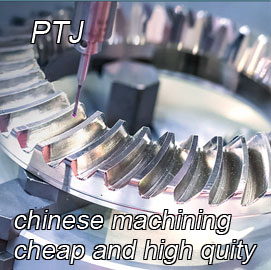
- 5 Axis Machining
- Cnc Milling
- Cnc Turning
- Machining Industries
- Machining Process
- Surface Treatment
- Metal Machining
- Plastic Machining
- Powder Metallurgy Mold
- Die Casting
- Parts Gallery
- Auto Metal Parts
- Machinery Parts
- LED Heatsink
- Building Parts
- Mobile Parts
- Medical Parts
- Electronic Parts
- Tailored Machining
- Bicycle Parts
- Aluminum Machining
- Titanium Machining
- Stainless Steel Machining
- Copper Machining
- Brass Machining
- Super Alloy Machining
- Peek Machining
- UHMW Machining
- Unilate Machining
- PA6 Machining
- PPS Machining
- Teflon Machining
- Inconel Machining
- Tool Steel Machining
- More Material

